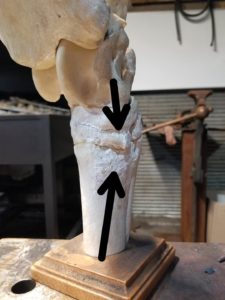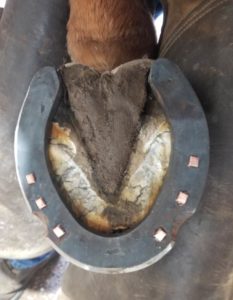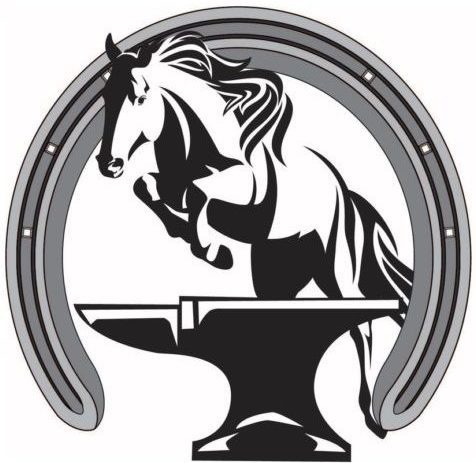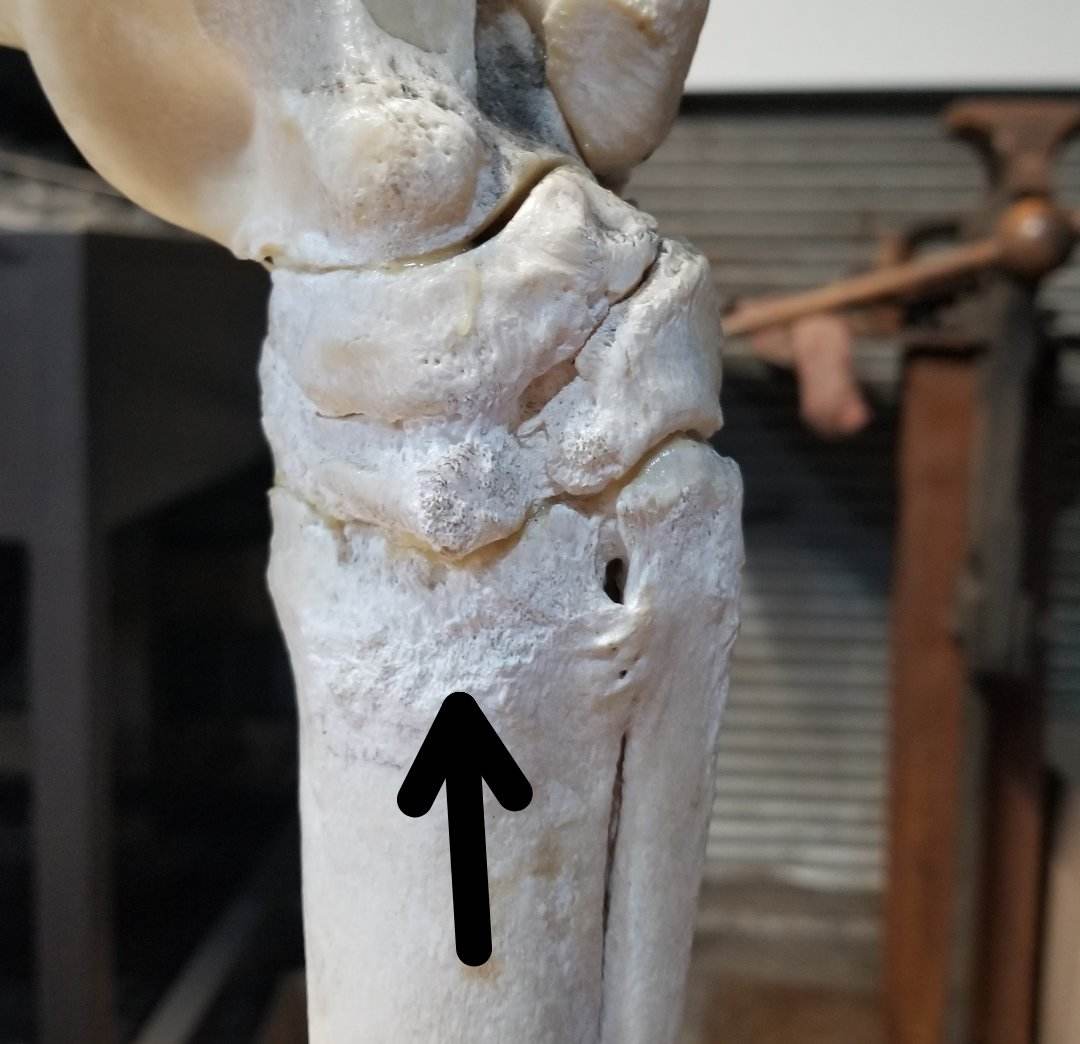As we begin looking at various pathologies that commonly affect our horses, we need a framework to organize our information so we don’t miss important facts. There are many acronyms we can use to keep our information organized; however, the following is what I use.
- Definition
- Anatomy
- Etiology
- Clinical signs
- Diagnostics
- Veterinary treatment
- Farrier treatment
- Prognosis
Definition
Bone spavin, sometimes simply referred to as spavin, is an osteoarthritic condition or degenerative joint disease (DJD) of the distal hock joints. Severity will depend on which joint and the location on each joint that is affected. Certain conformations and types of work can increase the risk factors for this condition. Often spavin begins to show up at the 8 to 14 age range and is common enough that the vast majority of horses will deal with hock pain at some point in their career.
Anatomy
While many horse owners may assume the hock is a singular joint, it is actually made up of multiple joints. The tibial tarsal joint makes up the majority of the range of motion of the hock while the distal (lower) joints do not have much range of motion but are used to dissipate shock.
Generally the tarsometatarsal, distal intertarsal, and occasionally the proximal intertarsal joints are affected. These joints are low motion joints, thus giving the horse a good prognosis once the joints are fused. Spavin is typically a bilateral condition with both limbs being affected; however, one limb is generally worse than the other at various times. Prognosis can depend on location on the joint. Because nothing in the body is in isolation, other soft tissues can be involved as well; for example, if the osteoarthritic changes are to the medial or lateral aspect of the joint then the collateral ligaments may be involved which can be more painful.

Etiology
Conformation is the primary factor when we are discussing the cause of spavin. A horse that has a fairly straight hind limb when viewed from the side or a horse that camps under with its hind legs being placed further under its body than normal will both be more prone to this condition than a well conformed horse with proper posture. The other main cause is the discipline the horse is used for. The harder a horse uses its hind end, the harder the ground it is working on or the more traction that is applied to hind shoes will cause an increase in predisposition to this pathology.
Experience tells me that every horse will end up with hock issues with the end result being spavin, it is just a matter of time and how hard they work. A horse with good conformation, proper care and a low concussion discipline will likely be older before dealing with hock issues. On the other hand a horse with poor conformation will likely be in the lower age range when they begin dealing with spavin.
Clinical signs
A shortened cranial phase (the limb swinging forward) of the stride will be one of the first clinical signs, lameness in the hind limbs will also be present. Horses will also sometimes drag the hind toe resulting in excessive wear. A reduction in range of motion can also be present when picking up the hind feet. Due to the complexity of the hindlimb and the reciprocal apparatus it is not possible to give a clear diagnosis based on clinical signs alone.
Diagnostics
Typical diagnostics will include radiographs of both hocks as well as possibly nerve blocks to determine the exact source of pain. Many times the initial onset of lameness is before there are radiographic changes to the joint. This means that in the early stages an MRI to detect soft tissue change or nuclear-scintigraphy to detect early bone changes and remodeling will need to be utilized if a definite diagnosis is wanted.
Veterinary Treatment
Typical conservative treatments will consist of an adaptation of the horse’s exercising routine, and possibly anti-inflammatory medication such as Bute or Equioxx. Another staple in medical treatment would be injection of joints with some type of corticosteroid. There are also surgical options; however, these are not as common.
Farrier Treatment
The exact shoeing treatment used will depend on the horse; however, the principles remain the same. We want to minimize concussion / shock upon landing, keep the horse from excessively adducting the limb and protecting the toe if there has been excessive wear. There has been recent research linking the use of a plain stamp shoe to increase soundness in the hind limb of horses with and without a spavin diagnosis.
With the above goals in mind, the latest research, and the experience of farriers for the past several hundred years, we can say that generally speaking a plain stamp lateral extension shoe will be the go-to choice for making a horse with spavin more comfortable.

Prognosis
While development of osteoarthritis in the hock will result in a lessened comfort level and range of motion, the overall prognosis for the horse is rather good as most can still function at a reasonable level of work with proper care.
Conclusion
A final word should be said in favor of prevention rather than treatment. If we look at a horse’s conformation with a critical eye to the type of work we are going to ask them to do and by providing proper maintenance for that horse we can many times delay the onset of an issue such as bone spavin rather than having to begin treatments when they are still at a younger working age. If you are concerned about current hindquarter or possible hock conditions with your horse, I would highly encourage you to speak to both your farrier and veterinarian, or if you interested in learning more about prevention of such issues, speak with your farrier and veterinarian to come up with a team approach to keeping your horse sound for the long term.

